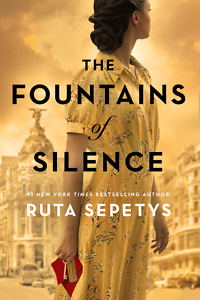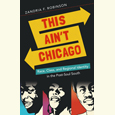Beyond Hemingway
Ruta Sepetys’ The Fountains of Silence uncovers the hidden history of Franco’s Spain
It begins with a flashback, a bullfight, a young man measuring cupfuls of blood. On a sweltering afternoon in 1957, young Rafael Torres Moreno, a butcher’s apprentice, tends shop in Madrid, but his mind is elsewhere. For more than 20 years, Spain has been under the thumb of the repressive dictator Generalissimo Francisco Franco; for more than 20 years, Rafa thinks, as he sells customer after customer the necessary ingredient for morcilla (blood sausage), “Spain has given blood.”

Rafa’s family has given blood as well. His parents — preschool teachers who opposed the fascists — were targeted by Franco’s Guardia Civil; while young Rafa and his sisters watched in terror, their father was shot and their mother dragged away to prison. He and his sisters Ana and Julia — three of the many protagonists of Ruta Sepetys’ fourth young adult novel, The Fountains of Silence — managed to survive, and now share a hovel with Julia’s husband and infant daughter, as well as Rafa’s bullfighter best friend. Nothing feels secure. The siblings live hand-to-mouth, forever looking over their shoulders. And they scarcely remember the time before their parents’ offense left them, as Ana puts it, “rowing dark waters of dead secrets.”
After two decades of deliberate isolationism, Franco has opened Spain’s borders, and American tourists and would-be investors are arriving in droves. “Many are unaware of what transpired in Spain decades earlier. They sip cava, romanticizing Hemingway and flamenco,” Ana, a chambermaid at the brand new Castellana Hilton Madrid, thinks as she watches wave after wave of diplomats, starlets, actors, musicians and businessmen saunter boldly — and cluelessly — through the Castellana’s lobby.
 Among them is a shy 18-year-old Texan named Daniel Matheson. Daniel’s father is a rich Dallas oilman, but his mother was born in Spain; though she’s a thoroughly assimilated Highland Park socialite, she’s eager to show her only son “the country her late parents so adored.” Daniel grew up speaking Spanish, which comes in handy when he runs into, and is instantly smitten by, Ana. The two hit it off like gangbusters, and romance burgeons.
Among them is a shy 18-year-old Texan named Daniel Matheson. Daniel’s father is a rich Dallas oilman, but his mother was born in Spain; though she’s a thoroughly assimilated Highland Park socialite, she’s eager to show her only son “the country her late parents so adored.” Daniel grew up speaking Spanish, which comes in handy when he runs into, and is instantly smitten by, Ana. The two hit it off like gangbusters, and romance burgeons.
Fluent Spanish also helps Daniel pursue his ambition of being a photojournalist, though right away his attempts to document the real Madrid land him in trouble with the Guardia Civil. “Don’t be stupid,” a veteran photographer warns, taking Daniel under his wing. “There’s a dark side here. … One wrong move and the police will be on you. You’ll be dead in a pit.” But Daniel keeps taking pictures, static images that turn out to be parts of a bigger and much more sinister story. Daniel’s parents are involved, as is Ana’s family, as is a Catholic orphanage, a hospital clinic, a nun on a Sophoclean quest for her own identity, a gravedigger who moonlights as a bullfighter, and a corrupt American diplomat who wields his power like a knife. Sepetys unfurls her plot carefully, and with exquisite slowness. By the time she pulls the narrative threads tight, the reader, like the characters, is thoroughly steeped in the novel’s atmosphere of fear, secrecy, misgivings, and mistrust.
The Fountains of Silence is much less harrowing than either Between Shades of Gray, Sepetys’ phenomenally successful first novel, or her second, Salt to the Sea. Both earlier books uncover obscure or deliberately obfuscated episodes of 20th-century European history; both are tragic, grim, and terribly upsetting. If The Fountains of Silence feels a little soft by comparison, it’s because Sepetys is admirably aware that the story of Spain’s lost generations may not be quite hers to tell. “My previous projects have contained threads of my own personal family history,” the Nashville-based writer explains in her author’s note. “When I began my research for what became The Fountains of Silence, I realized … I’d have to write from the outside in.”
But Sepetys wants us to read from the inside out. To this end, she includes a comprehensive research guide, bibliography, glossary, preface, and collection of photographs. And she peppers the text with primary source epigraphs. Anyone at all interested in mid-20th-century Spain has a perfect trail of breadcrumbs laid out and ready to follow. The Fountains of Silence never pretends to be the last word on Franco’s Spain; instead, it’s a place to start. Once again, Ruta Sepetys succeeds beautifully in shining light on a story the modern world has conspired to forget.

From 2012 to 2016, Fernanda Moore was the fiction critic for Commentary. Her work has also appeared in The New York Times Magazine, Marie Claire, New York, and Southern Living, among others.


